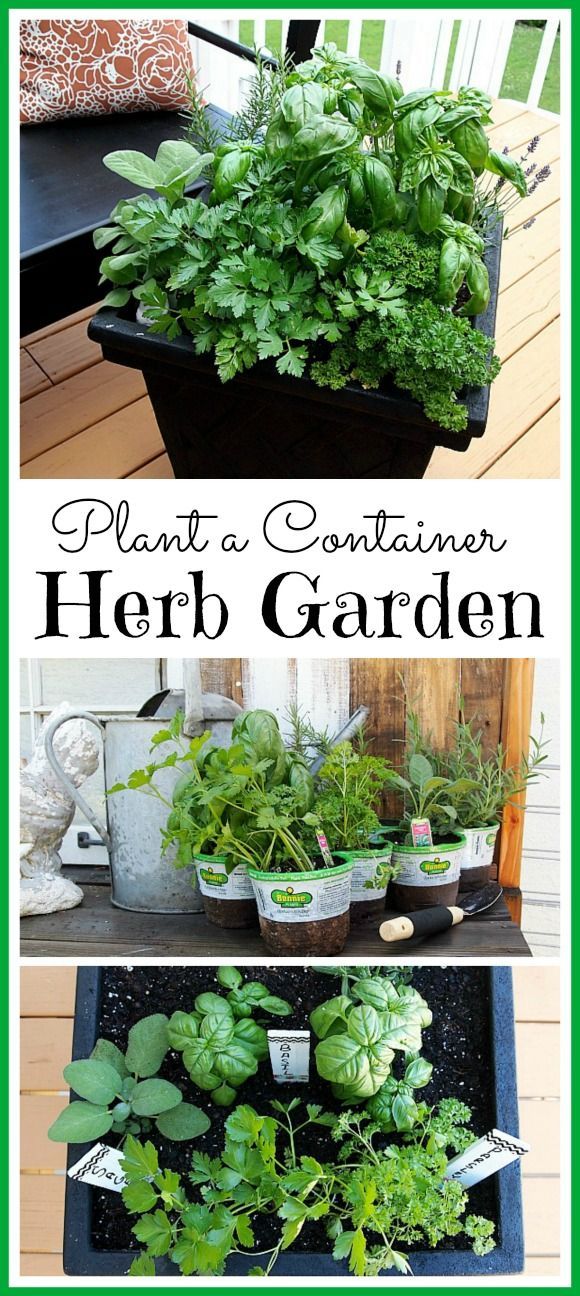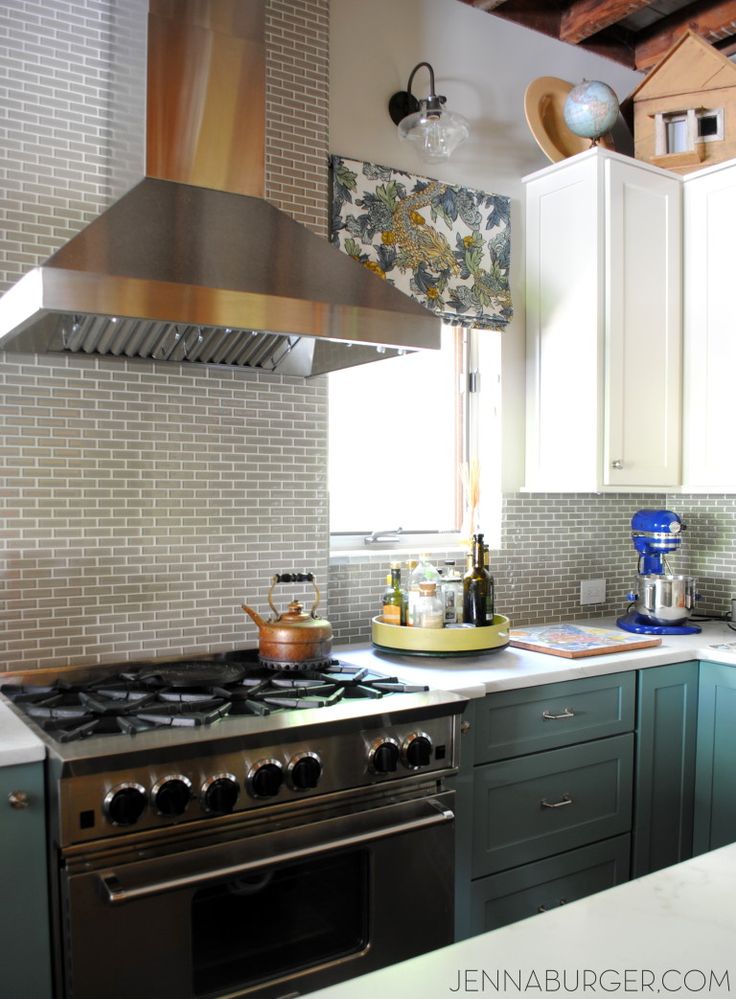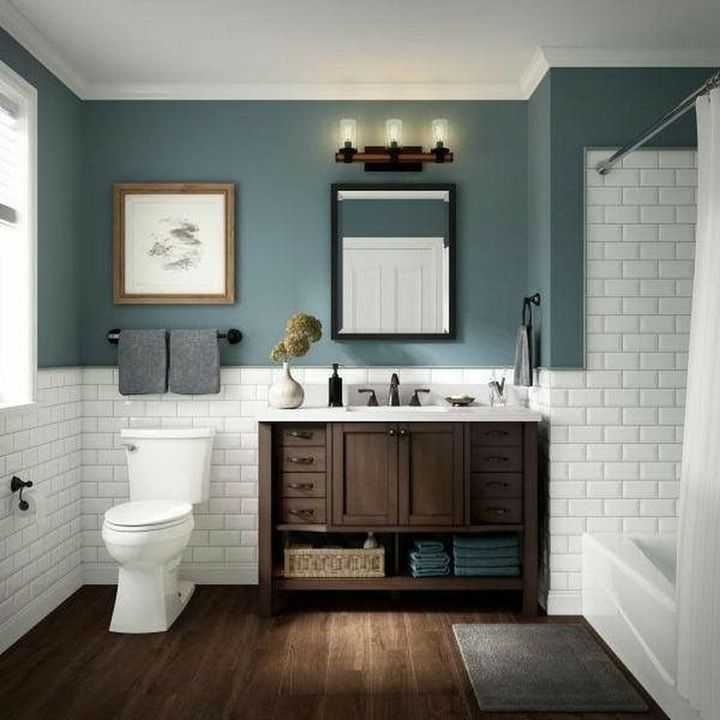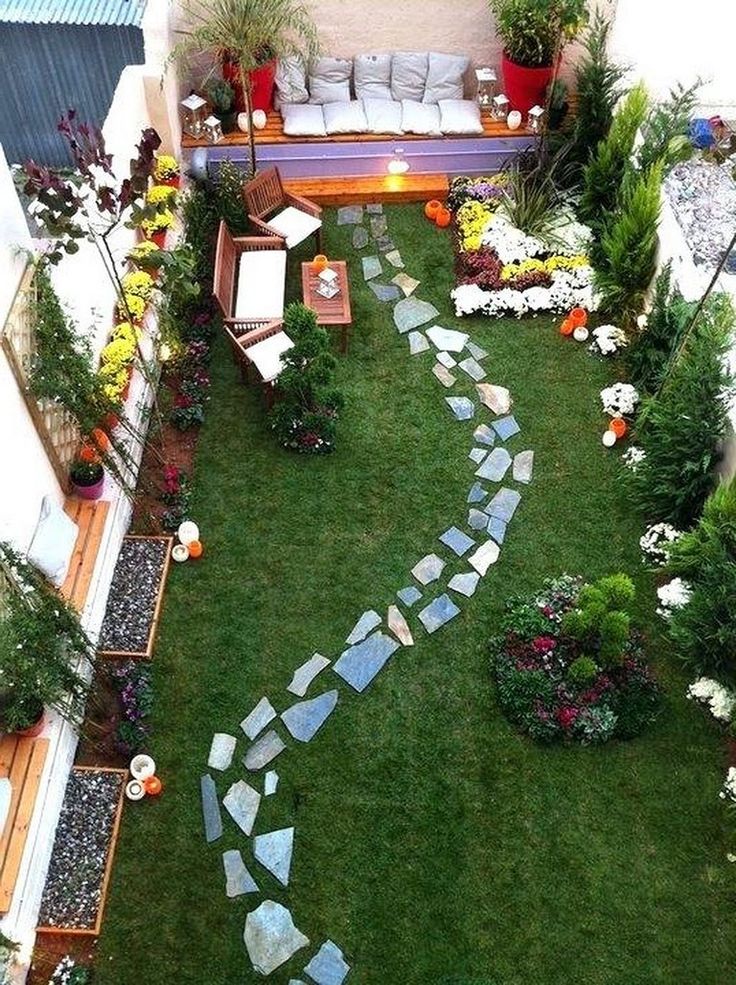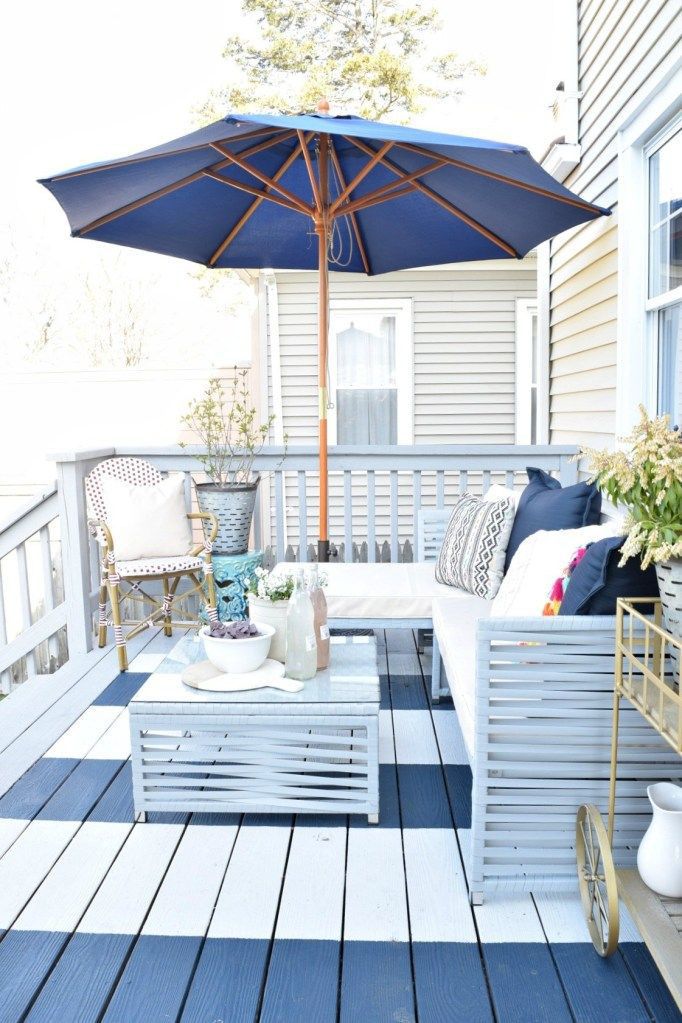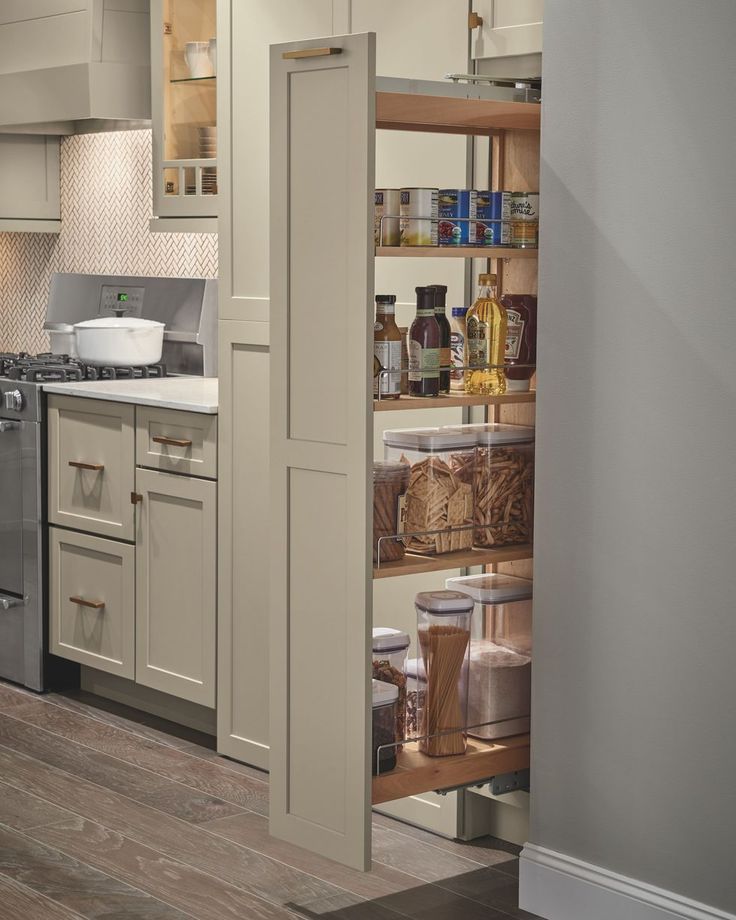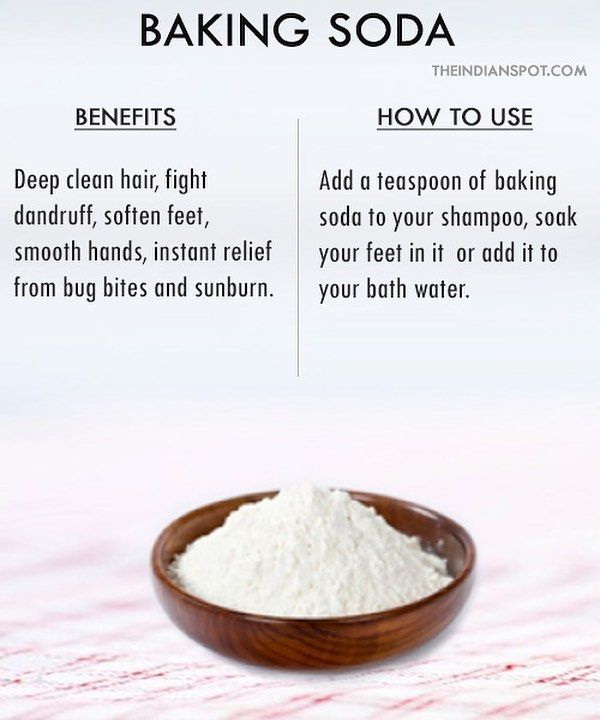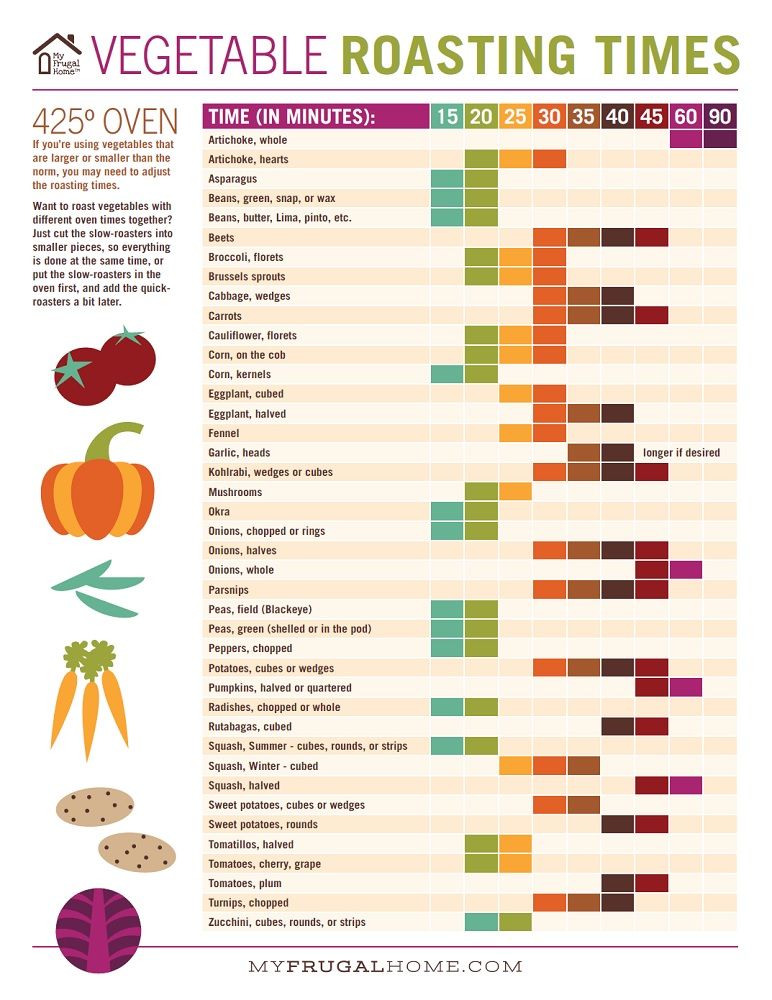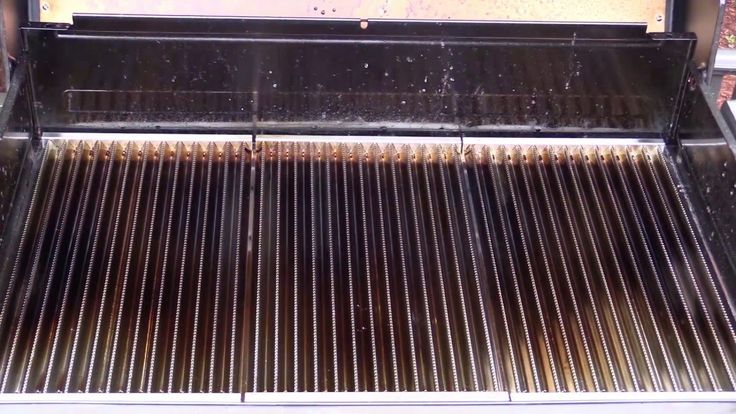Containers for herb gardens
How to pick the best pot for growing herbs
While many people wish to grow fresh herbs at home, not everyone has a yard or space for an outdoor herb garden. The good news is that container gardening makes growing herbs at home easy, even when you have a small space.
Container planting is convenient and can give your kitchen windowsill, patio, or balcony a big aesthetic boost.
Growing plants in pots also offers tremendous flexibility and a measure of control that traditional gardening lacks.
Choosing the best pot for your favorite herbs will help ensure success with your container herb garden, so here are some helpful tips to get started on the right track.
The characteristics of the herb(s) you are growing are very helpful in determining the best container for your plant, in terms of material and size. Plastic containers are best for herbs that like moist soil; terra cotta is best for herbs that prefer a drier soil. The container should always be slightly larger than your plant and needs drainage holes to allow excess water to move out of the potting soil. Shallow containers are best for plants with short root systems, while deep containers are best for plants with long taproots.
Common container materials
Common materials used for growing containers include ceramic, terra cotta, plastic, different metals, and resin. While aesthetics are important, each herb container material has advantages and disadvantages that should be considered depending upon your space and plant type.
- Glazed ceramic pots offer the most variety in shape and color, which means they can often be used as a home design element. These are the best choice for someone who wants to match a color scheme in their home and ceramic works for many different herbs. One of the drawbacks is they are heavier, and large containers may not be suitable for balconies.

- Get the glazed ceramic pots we recommend on Amazon here.
- Terra cotta pots are traditional, attractive, and affordable. The porous sidewalls allow excellent air movement in and out of the container, drying the soil out quickly. Because of this, clay pots work well for herbs that prefer drier conditions, such as lemon balm or lavender.
- Get the terra cotta pots we recommend on Amazon here.
- Plastic pots are popular as they are inexpensive, lightweight, and typically available in a wide range of colors. The non-porous material minimizes air exchange, keeping the potting soil moist longer. They are great for herbs that like moist soil like rosemary and cilantro. Keep in mind, though, that sunlight and temperature fluctuations will affect outdoor containers over time, making the plastic brittle or causing deterioration.
- Metal pots may include copper, brass, galvanized, or stainless steel and are durable and stylish, although expensive.
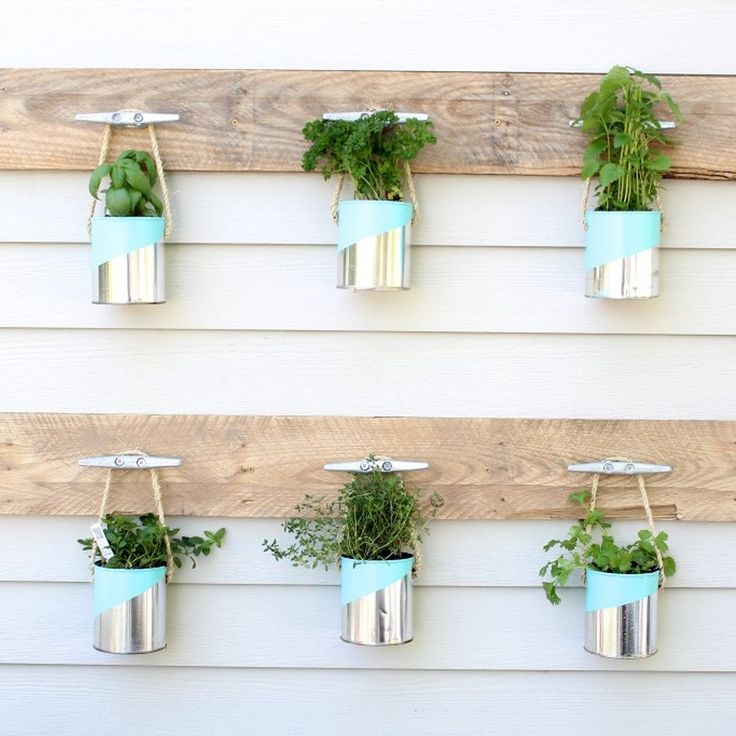 Care should be taken, though, as metal containers usually do not have drainage holes. When used outdoors or in direct sunlight, the metal can become very hot, raising the soil temperature and damaging the roots.
Care should be taken, though, as metal containers usually do not have drainage holes. When used outdoors or in direct sunlight, the metal can become very hot, raising the soil temperature and damaging the roots. - Get the copper metal pots we recommend on Amazon here, and brass pots here.
- Resin pots are made from wood resin and are lightweight, weather-resistant, and available in a wide range of finishes. They work well for plants you move back and forth from indoors to outdoors seasonally.
The enthusiast's guide to herbs
We’re proud to present our new e-book, The Enthusiast’s Guide to Herbs! Learn everything you need to know about growing and caring for herbs indoors, including in-depth info cards for the 35 most commonly grown herbs.
Click the link below to find out more!
Find out more
Container size for herbs
Basil and rosemary in terracotta potsHerbs can be a little like Goldilocks when it comes to pot sizes: too small, and their growth will be impeded, too large, and the extra space and soil are wasted.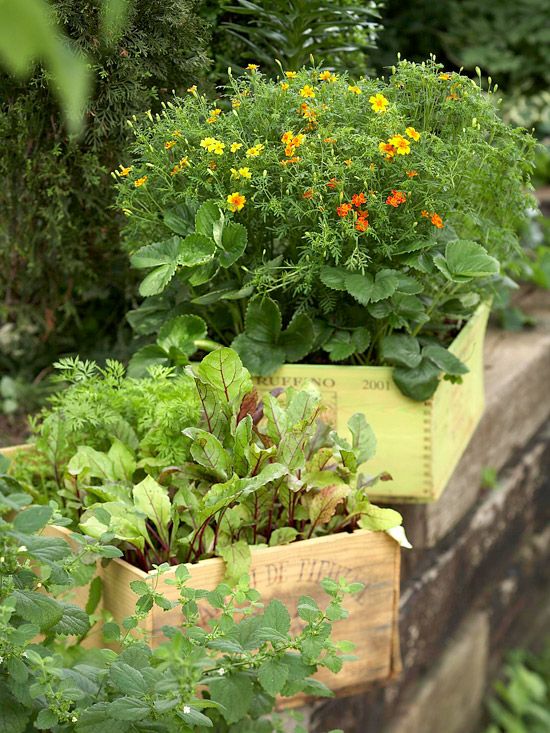 But when a pot is just right, an herb can achieve its full potential.
But when a pot is just right, an herb can achieve its full potential.
- 6-inch pots are best for dwarf varieties or shallow-rooted herbs like thyme or globe basil. Small pots need more frequent water, and it’s important to keep soil moisture consistent since varying water levels can lead to a less-than-healthy plant.
- Get 6-inch pots on Amazon here.
- 8 to 10-inch pots are perfect for almost any herb. Plenty of herbs will expand to fill pots over time, so a container this size can be used to limit the size of a mature plant.
- Get 8 and 10-inch pots on Amazon here.
- 12 to 18-inch pots are spacious enough to accommodate multiple herbs at once or grow exceptionally large, well-established herb plants. Herbs like parsley, which has a deep taproot, will thrive in a deeper, larger pot. Lemongrass also performs best in a larger-diameter container.
Remember that the larger a container is, the heavier it becomes when filled with potting soil. The weight may be fine when the plant is in place, but it could be far too heavy to lift and move inside in the winter comfortably.
The weight may be fine when the plant is in place, but it could be far too heavy to lift and move inside in the winter comfortably.
Proper drainage
When it comes to growing your own herbs in containers, good drainage is essential. Poor drainage can create an oxygen-poor environment that triggers root rot, stunting plant growth and eventually killing plants.[1] Because of this, most pots sold come with drainage holes in the bottom to allow the excess water to drain out of the potting soil.
If you find a container suitable for growing herbs that doesn’t have drainage, you can use a drill bit to create drainage holes in the bottom. Make sure to use a masonry bit when working with ceramic or terra cotta pots. Typically, between one and three holes offer sufficient drainage.
Some drainage holes come with a plug to prevent leaking onto indoor surfaces, but it is advised to simply use a drainage tray or plant saucer to catch any overflow.
Many pots have built-in drainage trays, but for those that do not, there are a vast array of drainage trays available for purchase on Amazon.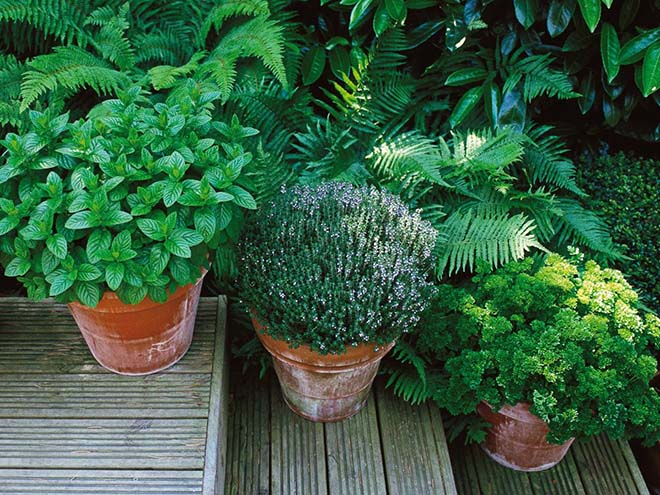
Specialty herb pots
Hanging avocado fruit on the treeMost pots are fairly standard-shaped, but there are some specialty pots to consider as well.
- Self-watering pots are handy for growing herbs that prefer moist soil. These containers ensure consistent watering and take the guesswork out of keeping herb plants deeply hydrated.
- Get the self-watering pots we recommend on Amazon here.
- Window boxes provide growing space for those who don’t have appropriate indoor spots and dress up otherwise plain windows. They are available in various styles, and a planter box is suitable for any window that receives eight hours of sun each day.
- Hanging pots are another stylish way to make use of limited space or keep herbs away from children or pets. However, soil in these planters may dry quickly, so a self-watering option works best.
- Shallow pots can be beautiful and decorative but are best-suited for chives, thyme, tarragon, and oregano with shallow root systems.
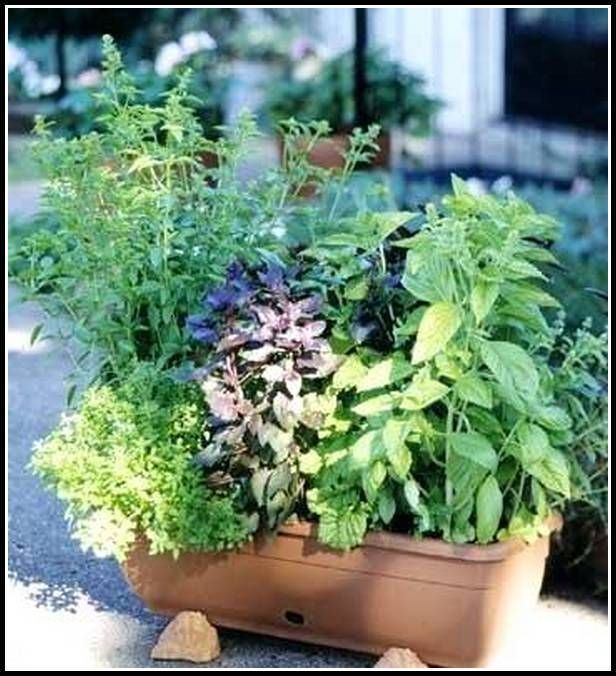
Potting soils for container herbs
Growing herbs successfully, whether indoors or outside, begins with filling your containers with high-quality soil. Check out our full soil and growing media guide for more on that here.
Remember, plants require soil that both holds sufficient root zone nutrients and moisture yet drains the excess water to allow the roots to breathe.
Commercially available potting soil can fulfill all of these needs, but creating a DIY homemade potting mix is also possible. When making a potting mix, use peat moss, vermiculite, compost (or other organic material), and a slow-release granular fertilizer.
Caring for herbs in containers
Herbs grown in pots have some basic needs: eight hours of sun, proper watering, a dose of nutrients periodically, and regular harvesting.
Sunlight requirement
While ample full sun is beneficial to herb gardens, a minimum of eight hours of sun exposure is a general guideline.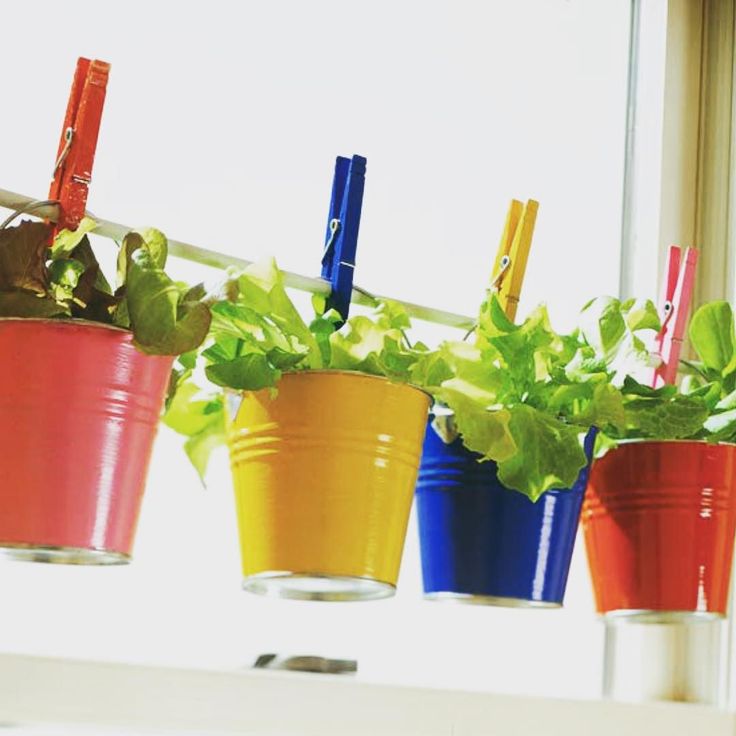 Many herbs will thrive in indirect bright sunlight, and some will even grow well in less than eight hours. Learn the specific requirements of your herbs, and remember, it is always possible to move a struggling plant to a better location.
Many herbs will thrive in indirect bright sunlight, and some will even grow well in less than eight hours. Learn the specific requirements of your herbs, and remember, it is always possible to move a struggling plant to a better location.
Watering
Watering indoor plants takes a little practice to get right.[1:1] It’s a good idea not to water on a predetermined schedule, as many factors will affect how quickly moisture evaporates from the soil of different planters. Ideally, a finger inserted an inch into the soil will indicate whether the soil is dry enough to warrant watering.
Fertilizing
Container plants do enjoy a little infusion of rich nutrients from time to time, but herbs should be fertilized sparingly. Too much foliage growth will dilute the flavor. Many fertilizer options can be applied to an indoor herb garden. Still, the best bet is usually a good organic fertilizer or a water-soluble or slow-release fertilizer designed for herb plants.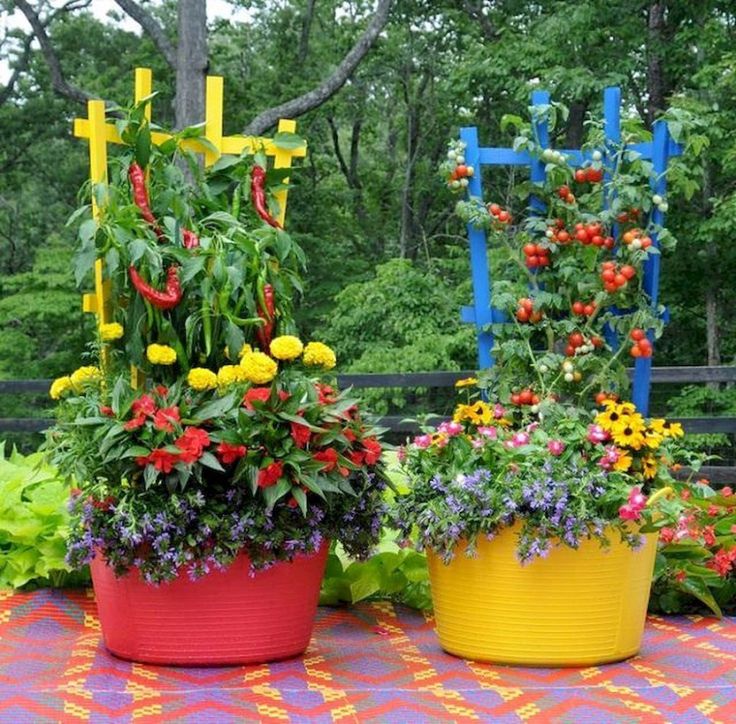
When fertilizing, always follow the product label for dosing instructions and how often to apply.
Harvesting
Many kitchen herbs benefit significantly from periodic harvesting of new growth, which encourages bushy, vigorous growth. This is one of the best aspects of herb gardening: harvesting regularly keeps growth vigorous and supplies a never-ending supply of fresh herbs for the kitchen.[2]
New growth can be harvested using sterilized, sharp kitchen shears, or you can pinch off the leaves with your fingers. The specific “pinching” technique for harvesting herbs removes the new growth close to a growth node.[3]
Best herbs for beginners
Growing herbs at home appears to be pretty straightforward, but for newbie gardeners, even the most straightforward planting directions may seem a bit mysterious. Several measures can be taken to guarantee the success of your container garden if you’re a newcomer to indoor gardening, including the choice to start with easy-to-grow, forgiving herbs.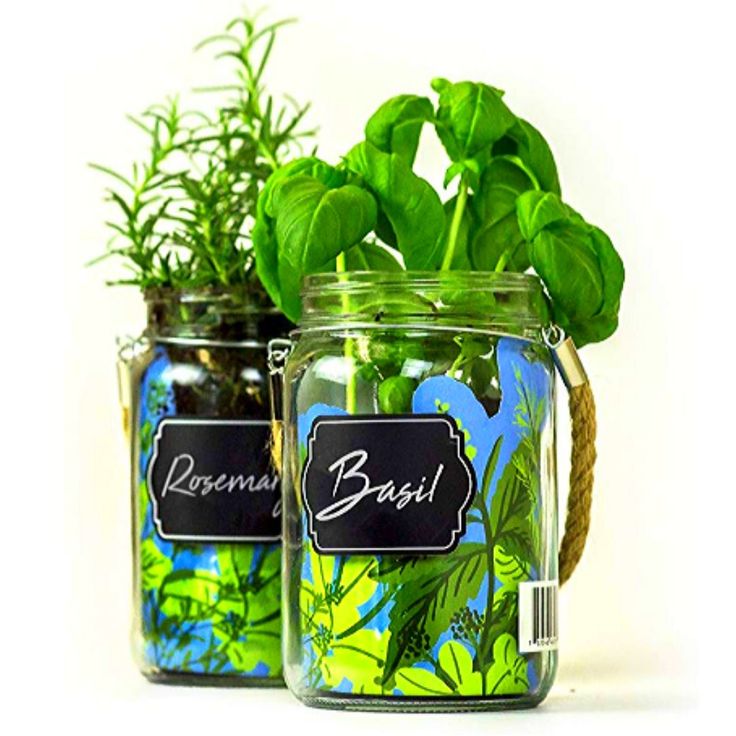
- Greek oregano and lemon thyme are incredibly resilient and can tolerate inconsistent watering.
- Chives are forgiving of dry soils.
- Basil is a good communicator– its leaves will droop when it needs watering, which can be extremely helpful for folks with little gardening experience.
For a more in-depth look at easy herbs to grow, check out our article, The 12 easiest herbs to grow for the first time.
FAQ
Does my container need to have drainage holes?
No, your container doesn’t need to have drainage holes, however they are beneficial. Drainage holes allow the excess water to drain from the soil, helping to prevent root rot. Without drainage holes, any excess water stays in the root zones, creating low-oxygen conditions, damaging the plant. Using a drill bit, you can add drainage holes to most types of containers if they don’t come with them.
How big of a container do I need for my herb plant?
When growing an herb plant in a container, the container needs to be slightly larger than the plant itself. A 10-inch container is suitable for young herbs, giving them room to grow to their mature size. For mature plants, choose a pot 2 to 4-inches wider in diameter than the plant itself. Plants with shallow root systems can be planted into containers that aren’t deep, but herbs that produce long taproots need deeper containers.
A 10-inch container is suitable for young herbs, giving them room to grow to their mature size. For mature plants, choose a pot 2 to 4-inches wider in diameter than the plant itself. Plants with shallow root systems can be planted into containers that aren’t deep, but herbs that produce long taproots need deeper containers.
Can you grow multiple herbs in one container?
Yes, you can grow multiple herbs in one container under certain circumstances. When grouping them, they need to have the same light requirements and have the same or similar watering needs. Plants that prefer full sun and consistently moist soils grow well together; plants that prefer full sun and like the soil to dry out completely before watering again would also pair well. It’s important, too, to make sure the container is large enough to accommodate all of the plants.
Join our email club—get printable info cards free!
Sign up to receive our newsletter and get access to 10 printable plant info cards from our e-book for free.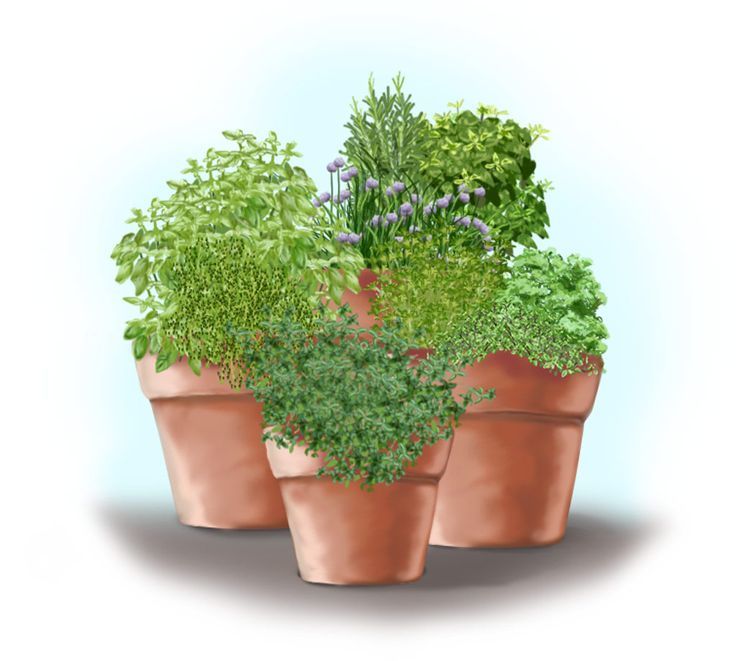 Also receive:
Also receive:
- $4 discount code for our Guide to Herbs e-book
- Semi-weekly plant inspiration & bite-size tips and tricks
Find out more
Perry, Leonard. n.d. “Watering Houseplants Properly.” University of Vermont, Department of Plant and Soil Science. ↩︎ ↩︎
Texas A&M AgriLife Extension. n.d. “Health and well-being benefits of plants.” Accessed August 24, 2021. ↩︎
Levine, Denise. 2018. “To Pinch or Not To Pinch, That Is the Question.” Napa Master Gardener Column. Published April 20, 2018. ↩︎
Selecting the Right Herb Pots and Planters
The 4 most important factors to choose the best outdoor pots for your herb garden.
Creating a container herb garden is a very flexible way to grow fresh herbs in the home garden. And many pots will bring color and interest to the garden landscape.
Growing herbs in pots also allows you to move them around as needed to new areas of your garden or bring them closer to your kitchen.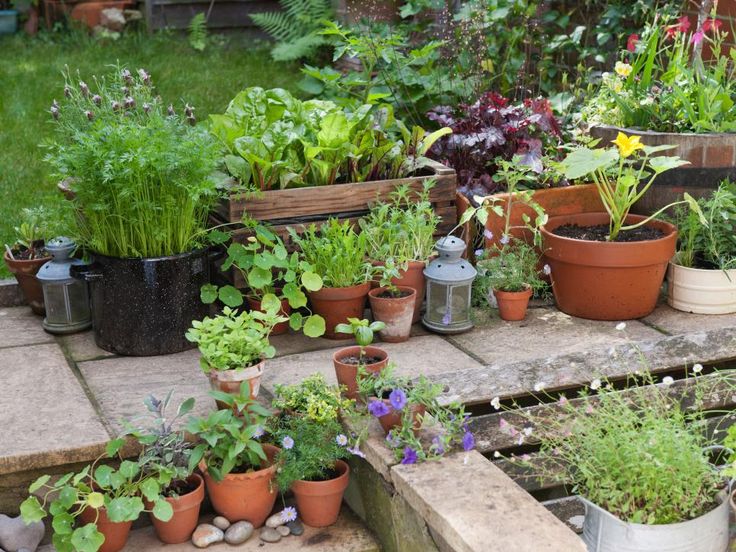 You can change the arrangement according to the season and create focal points in your garden depending on which herbs are blooming.
You can change the arrangement according to the season and create focal points in your garden depending on which herbs are blooming.
Almost all herbs are well suited to growing in containers. However, you should review the growing requirements of the specific herb you decide to include in your potted herb garden before selecting the pot.
Here are some great tips to choosing the right herb pot for your plants.
1. Select Herb Pots That Have Good Drainage Holes.
Outdoor pots should have good sized drainage holes to allow for easy draining. When it rains, the water will need to be able to drain thoroughly or your herbs will be swimming. Most herbs do not appreciate having “wet feet”.
Fabric pots like the Smart Pot are also a good choice for herbs since they do not hold excess water. The fabric is porous, so water drains out easily. This eliminates the possibility that your herbs will be sitting in water.
2. Choose The Right Size Pot For Your Herb Plants.
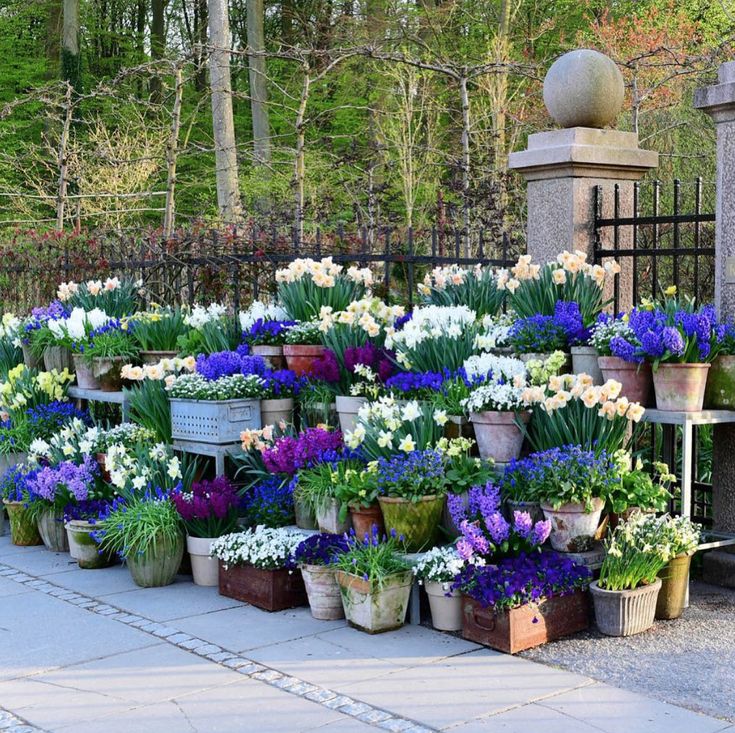
The size of the pot you choose will contribute to the overall size of the herb plant. If you want your potted herbs to reach their full potential, select a container for your herbs that will accommodate the mature size of the plants.
See the chart below to check the mature size of the most common culinary herbs. Here are a few basic tips to keep in mind when planning your container herb garden.
- Herb Pots should be a minimum of 6 inches in diameter. Only the dwarf or creeping varieties of culinary herbs should be placed in a small pot, such as thyme or spicy globe basil.
- Herbs that are heavy spreaders can be contained by the size of the pot. A mint will fill either a 6 inch or 20 inch pot in time. You can control your potted herbs size by limiting the size of the pot.
- Some herbs do better in deeper pots, such as Parsley & Basil. Parsley has a long taproot & basil has an extensive root system. When selecting a pot for parsley or basil, make sure the pot is at least 18 inches deep.
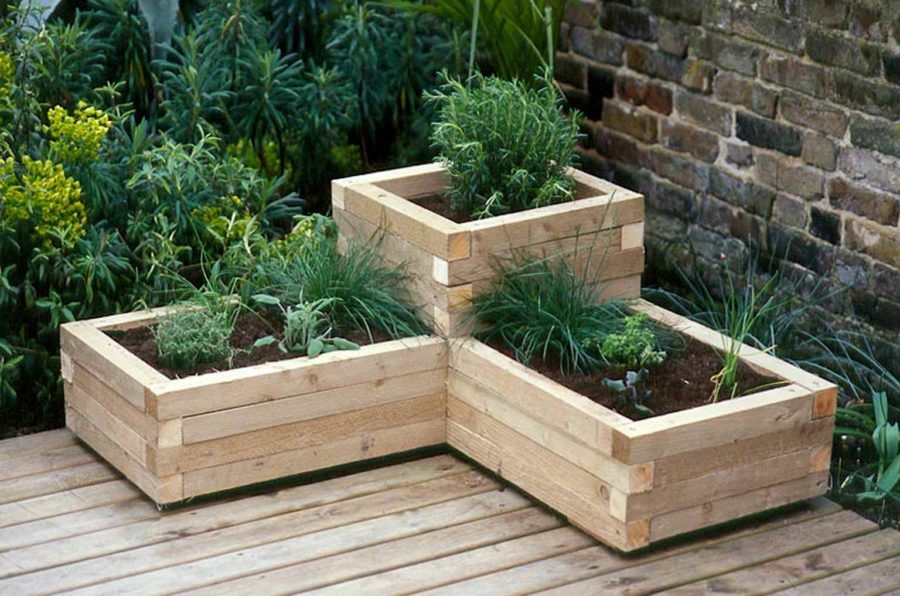
- When you are purchase herb plants in nursery pots from a garden center, you will want to re-pot them into new pots which are at least double the size of the nursery container.
3. Choose The Right Materials For Your Herb Pots.
Herb Pots are made from several different types of materials. Choose the types of material used in your container herb garden based on the following factors:
- The durability for holding up to the outdoor elements.
- The weight of the pot and your ability to move it once it is filled with soil and your plants.
- The moisture retaining ability of the material.
Here are some common materials used for herb containers and the pros & cons of each.
Clay or Terracotta Pots
Clay pots are an affordable pot material that looks nice in many landscapes. They are also not terribly heavy.
However, you may need to bring clay pots inside over the winter since they may crack when exposed to fluctuating outdoor temperatures.
Their porous nature may also require more frequent watering since they tend to dry out quicker.
Cement or Stone Pots
Stone pots can be absolutely beautiful and there are many pretty treatments, such as glazing or hand-painted pots. However, stone pots will be very heavy.
These are good choices when the pot will become part of the landscape like large stone pots on either side of an entryway.
But they will be very hard to lift once filled with soil and herbs. Don’t choose this type of herb pot when you know you will want to move them around your potted herb garden.
Plastic, Fiberglass and Resin Pots
Plastic garden pots are an attractive solution while remaining affordable. These are also much lighter & easier to move, so are good choices when you need to re-position them in your container herb garden.
The downside is they are not as durable and the color may fade or chip over time.
4. Design a Container Herb Garden with Shapes, Sizes, And Colors.

Give some thought to the overall impact you want to create with your container herb garden and its role in your landscape. Do you want to make a statement or do you prefer a more natural look? Ask yourself these questions when deciding on your choice of herb containers.
• How Will You Use Color?
Do you want the pots to blend in with the rest of your garden? Then choose neutral colors and let the herbs be the focal point instead of the containers.
Do you have a formal landscape? Having too many colors could be distracting. In this case, you can stick to one or two complimentary colors.
Do you want a playful, eclectic garden? Then choosing a few bright-colored pots may be just right.
• What Sizes Do You Need?
Always choose larger pots over smaller pots when given the choice. Fifteen small pots will end up looking very messy. You may consider a few large planters where you can combine several herbs that have similar growing requirements. Then place a few medium or small pots in front to create a small grouping.
Spend some time in the garden center or planning it out on paper first, so you can consider the overall effect of your container herb garden before you make the purchase.
• What Shapes Do You Prefer?
Herb pots come in a variety of shapes and sizes. We typically think of rounded pots, but square pots can fit into some areas much easier such as on either side of a doorway. A long rectangle trough or window box may look nice framing the sides of your patio or deck.
Recommended Outdoor Pots and Planters For Growing Herbs
Most garden centers or home decor stores will have a wide selection of outdoor pots available for purchase. But here are a few more ideas from our favorite online retailers where you can find more specific or unique outdoor containers that are suitable for growing culinary herbs.
VegTrug 8 Pocket Herb Planter
- Includes 8 individual pocket liners
- Material: FSC Certified Cedar
- Size 31″ x 31″ x 23″
Check Price on Amazon
The VegTrug Raised Herb Planter makes a nice gift for someone who wants an easy way to grow their own kitchen herbs from a comfortable height.
Eight individual compartments keep your herbs separate and neat. This design keeps spreaders such as mint or thyme in check and prevents overcrowding that can lead to all sorts of growing problems.
The height makes it much more comfortable, especially for older gardeners, and makes it possible to take care of your plants from the comfort of a wheelchair. It is also fun for the younger generation who are just learning about gardening to watch the herbs grow right at their eye level.
Ideal for patio herb gardens, this easy to maintain cedar planter is a hit for herb gardeners of any age no matter the size of their outdoor space.
Smart Pots
- Soft sided fabric pots
- Keeps plants cool
- Prevents root bound plants
- Excellent drainage
- Made in the USA
check price on Amazon
Fabric pots have been used by commercial growers for years. Home gardeners are now using the same design to grow healthy plants in their own backyards.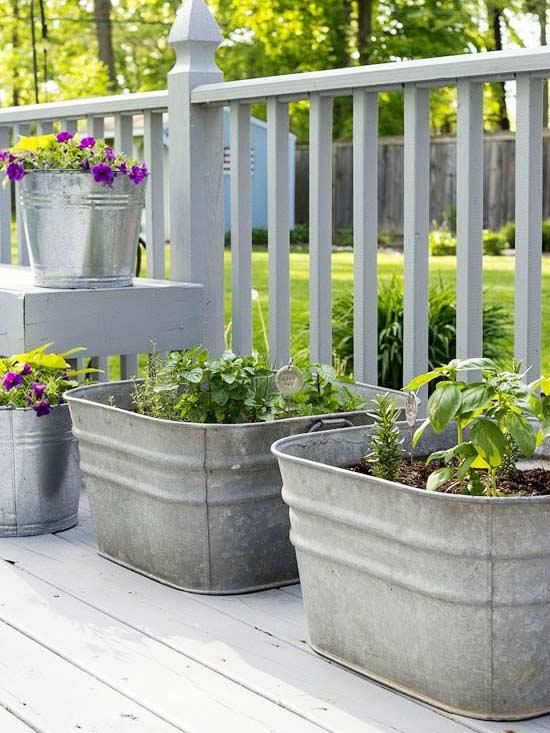
The secret is in the fabric which allows air to reach the soil, naturally air pruning the roots and keeping them from getting too hot. The porous nature of the fabric allows for easy drainage and makes it near impossible to overwater your plants.
These popular containers are available in a range of sizes from the smaller 5 or 10-gallon pot to huge raised bed style fabric planters of 50 or 100 gallons.
3 Tier Wooden Patio Planter Boxes
- Each box is 7 x 5.5 x 17 inches
- Made from long lasting cedar
- Handmade by Grampas Workshop Goods and sold on Etsy.
Find it on etsy
These beautifully handmade wooden planters are just the thing for a rustic or modern look. Each box is left unsealed for you to paint or finish as you like.
The ladder design works well as a small kitchen herb planter and can easily fit on your deck or patio.
Garden Tower 2
Grow up to 50 plants in a 4-foot square foot area
- 43 inches tall x 24 inches wide
- Central composting column
- Rotates for even sun distribution
- Made in the USA
Buy @ Garden Tower Project
If you are short on space, but still want to grow a robust vegetable and herb garden, these stacking planters are a great solution.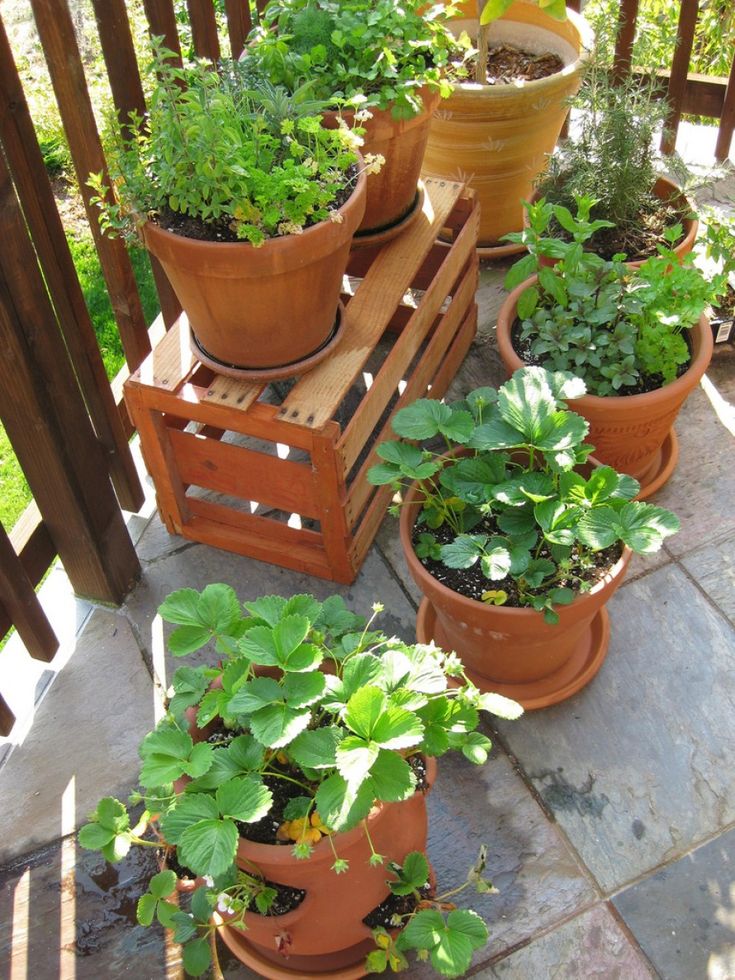 The vertical design is both efficient and practical.
The vertical design is both efficient and practical.
With room for up to 50 plants and a center composting column, these stackable outdoor containers create a unique system that makes it fun for gardeners of any age to set up an edible garden at home.
Set of 3 Terra Cotta Planters
- Large: 6.5 inches
- Medium: 5.3 inches
- Small: 4.2 inches
Check Price on Amazon
Enjoy the natural look and beauty of terra cotta pots with this set of 3 pots, perfect sized for smaller herb plants. Each pot has a drainage hole in the bottom and a matching saucer.
This set is perfect to plant each herb in a separate pot, but still create a cohesive grouping. Use the larger, deeper pot for bigger herbs such as Rosemary or a sage plant, the medium size for basil, parsley, or cilantro, and the smallest pot for thyme or mint.
Lexington Self-Watering Planters
- Sizes: 14″ Squre, 20″ Square; Window Box – 36″ Long
- Colors: Red, White, Blue, Grey or Black
Buy @ Plow & Hearth
For a more traditional home, these Lexington self-watering planters are an easy way to keep your plants well-watered and healthy.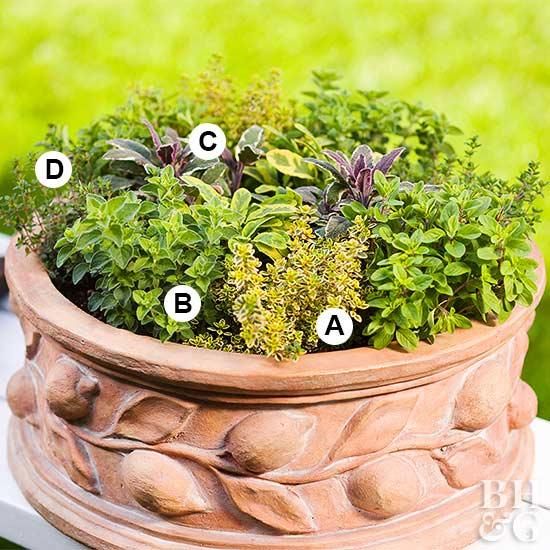 All use a self-contained irrigation system that promotes strong root development and eases the worry of watering too much or too little.
All use a self-contained irrigation system that promotes strong root development and eases the worry of watering too much or too little.
The square planters are suitable for growing individual herbs or a small grouping of compatible herb plants. The longer windowbox planter would be terrific outside filled with an aromatic selection of thyme or mint. Just imagine opening your window in the summer months to these delightful fragrances!
Designing your potted herb garden is a fun exercise and when done with some planning can be a beautiful addition to your home & garden’s appeal. Once you have chosen the pots for your container herb garden, make sure to read the article on growing herbs in pots to ensure your herbs are as healthy as possible.
Enjoy these Related Pages
10 Culinary Herbs to Grow in the Indoor Herb Garden
Want to grow a few culinary herbs in your kitchen? The following 10 culinary herbs can all be grown...
Container Herb Gardens: How to Grow Potted Herbs in 6 Easy Steps
Growing herbs in pots is one of the easiest ways to have fresh herbs at your fingertips.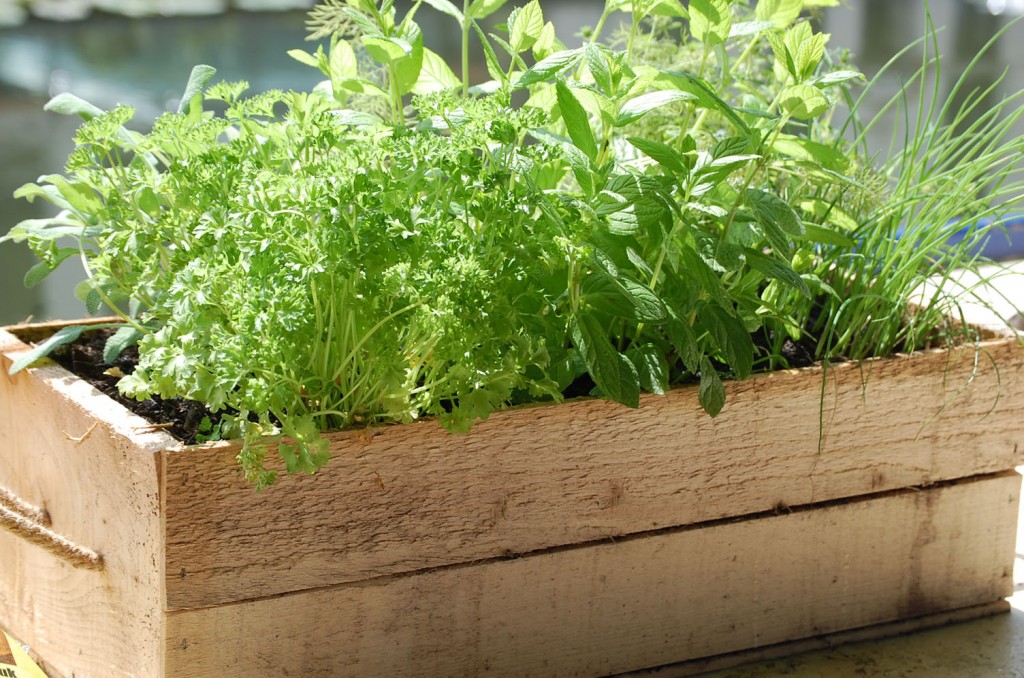 There are ...
There are ...
Create a Healthy Kitchen Herb Garden
Creating your own kitchen herb garden is one of the most enjoyable & rewarding activities for gardeners...
How to Grow Herbs From Seed - A Guide To Success
Growing herbs from seeds can be an addictive pastime. Check out our easy-to-follow guide that has all...
How to make a windowsill herb garden
Learn how to make a windowsill garden if you don't have enough space. The pleasure of harvesting your own herbs is immense.
Check !
You don't need a big yard for this, just a windowsill that gets a few hours of sunlight.
Anyone with limited space can create a mini herb garden that grows on a windowsill.
Here are 6 basic steps to follow to make this possible. nine0003
1. Choose the right containers to make your windowsill herb garden
Either use multiple pots to grow specific herbs in each, or choose a container wide enough to fit easily on your windowsill.
Make sure the pot you use must be at least 15-20 centimeters deep. Herbs are shallow rooted plants, so they don't need deep containers.
However, most herbs such as mint and thyme tend to spread, so it's good to choose a pot that is wide.
Another advantage of choosing a large pot is that you can fill it with a lot of soil and this will save you from frequent watering.
2. Ensure Good Drainage
Once you have selected a container or containers, the second step is to ensure good drainage. Check the bottom of the container for drainage holes, if there are not enough, make a few more. nine0003
You don't need to add gravel or clay balls to make a drainage layer.
This is a myth that does not benefit from drainage.
Be sure to check out our article to find out why you shouldn't!
3. Provide quality soil
The soil or growing medium for growing herbs must be of the best quality. It should be light, permeable, fertile and airy. nine0003
Buy a soilless potting mix or make your own by adding perlite, compost and garden soil.
You can't use regular soil to grow container plants, and a soilless growing medium is essential to the success of your window sill garden.
4. Planting a herb garden on a windowsill
Be realistic and don't try to grow all the fragrant and delicious herbs you hear about.
Instead, make a list of the herbs you'd like to plant, you'd like to consume, and eliminate those that don't fit the growing conditions you have. nine0003
Since you are growing herbs in a very small space, you cannot experiment. Forget about species and varieties that are difficult to grow and are not suitable for the climate you live in.
Select basil , rosemary , thyme , oregano , cilantro and sage if your window is exposed to at least 5 hours of direct sun.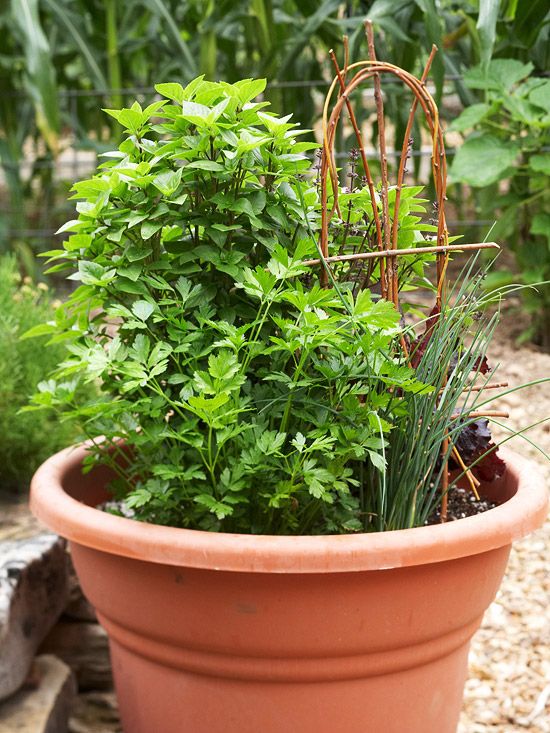 If sun exposure is less than this, prefer parsley , lemon balm , fennel , chervil and mint .
If sun exposure is less than this, prefer parsley , lemon balm , fennel , chervil and mint .
In addition, you can also try growing garlic and green onions and many other delicious vegetables on your windowsill.
5. Caring for your windowsill garden
Water your plants frequently in summer, limit the need for watering in autumn and winter.
You can also add hydrogel crystals into the soil and heavy mulching to conserve water if you live in a tropical climate.
To improve the quality and quantity of your crop, you need to use fertilizer regularly. If possible, opt for Organic Fertilizer , which provides all the nutrients you need while being more sustainable.
Keep in mind that you will need a nitrogen-rich fertilizer to encourage leaf growth in herbs.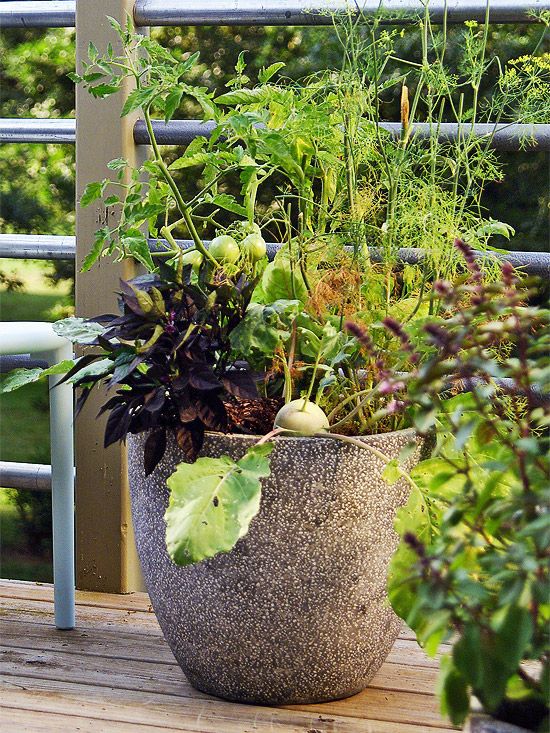 nine0003
nine0003
Using compost or manure is also a good idea!
6. Harvesting
The best way to encourage foliage production and dense growth is to regularly harvest herbs , this frequent pinching and picking of leaves promotes lush and healthy plant growth. You will also need to prune the flowers to keep the plants from seeding to extend their growing time.
In addition to adding some flowers to your windowsill garden, you can plant annual flowers which require the same growing conditions to grow.
How to make a herb garden with recycled materials
Herb gardens take up little space in the garden, making them practical for any size home, even if you only have a tiny window to grow plants in. Garden centers sell grass seedlings that can be replanted for faster harvest, or grow herbs from seed. Store-bought planting containers can be a significant investment, but expensive containers are no better for keeping plants alive than a regular container. A variety of recycled items can be used in the design of a herb garden - containers should only have a small capacity for storing soil. nine0003
Basic Instructions
1
Choose a spot for your herb garden that gets plenty of sun. Plants have different sunlight needs, but a location with at least five hours of sunlight per day is ideal. Choose a sunny location in the yard, on the terrace, or place the garden near a south-facing window inside the house.
2
Measure your herb garden space to make sure you select recycled containers that will fit in the space provided. Remember that growing space isn't just limited to ground level; consider vertical planting options, use porch railings and window sills. nine0003
3
Wash and sanitize all recycled containers before using them to grow herbs. Empty cans and soda bottles may contain food residue. Soak the containers in a solution of about 1 part bleach to 3 parts water for about 30 minutes to kill bacteria that can affect plant growth.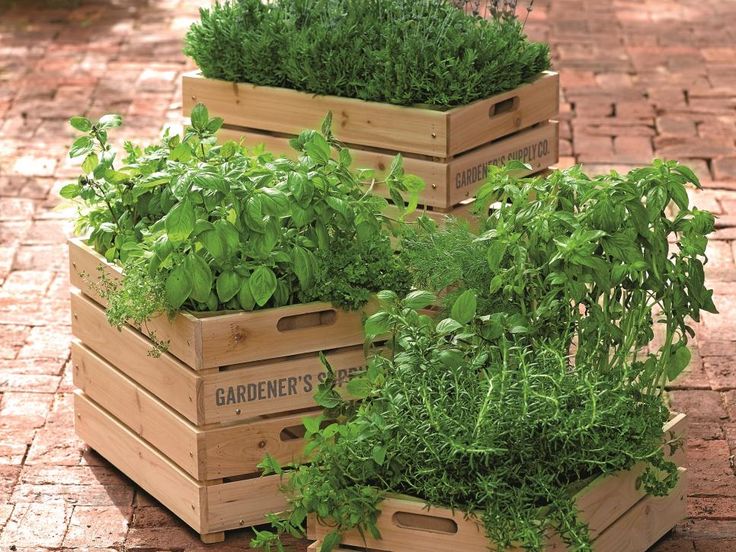
4
Drill or punch a few small drainage holes in the bottom of non-porous containers to allow excess water to drain, which will reduce the chance of root rot in herbaceous plants. nine0003
5
If desired, paint the outside of the recycled containers to provide some consistency between different types of containers. For example, if you are using several different types of recyclable herb containers, you can paint each container blue and then put a label on the front to identify each type of herb.
6
Place a few inches of gravel or similar drainage material in the bottom of each container to increase the container's ability to drain excess water. nine0003
7
Place herb containers on the side of the house, on the outside wall of the barn, or on the porch railing to take advantage of the vertical space to grow plants around the house. This step is especially worthwhile if you have a small yard with little or no space for growing herbs on the ground.
8
Make labels to clearly identify the different plants in your herb garden; use a separate label for different varieties of the same plant species. Drawing sticks, laminated cardboard, and small painted stones work well as plant markers. Skip this step if you have painted the outside of the container and have the name of the plant printed on the side. nine0003
Creative Herb Garden Solutions
1
Attach several large tins, such as soup or coffee cans, to the wall of your barn or home, and plant a different type of herb in each tin. Remember to punch holes in the bottom of each jar and add gravel for drainage. If you don't want to drill into the wall, you can set these recycled seedlings on an open shelf or stand.
2
Cover the back and sides of the wooden pallet with strong black plastic, leaving the front of the pallet and the top clear of plastic. Fill the tray with sterile potting soil, then add herbaceous plants to the soil between the slats and at the top of the tray. You can plant only one type of grass in each row of planks, or you can mix different types of grass for a more natural look. Attach the pallet vertically to the wall or hang it on a support structure to keep the space clear. nine0003
3
Plant your herbs in old baskets, matting bags or linen bags, then hang them or place them in a sunny spot on your terrace or garden. If the bags or baskets are deep, fill them partially with straw or other light material and then fill them to the top with soil. This will greatly reduce the amount of soil needed, since the roots of most plants require only 6-8 centimeters of soil to grow.
4
Use anything from old milk jugs to 2 liter plastic bottles for your herb garden. You only need to make drainage holes in the bottom and fill with gravel a few inches for drainage. nine0003
5
Fill old work boots with dry, rotten soil and plant grass in each boot. Place your shoes in a sunny spot outside your door to give the impression that the plants have taken root in the shoes your family left outside.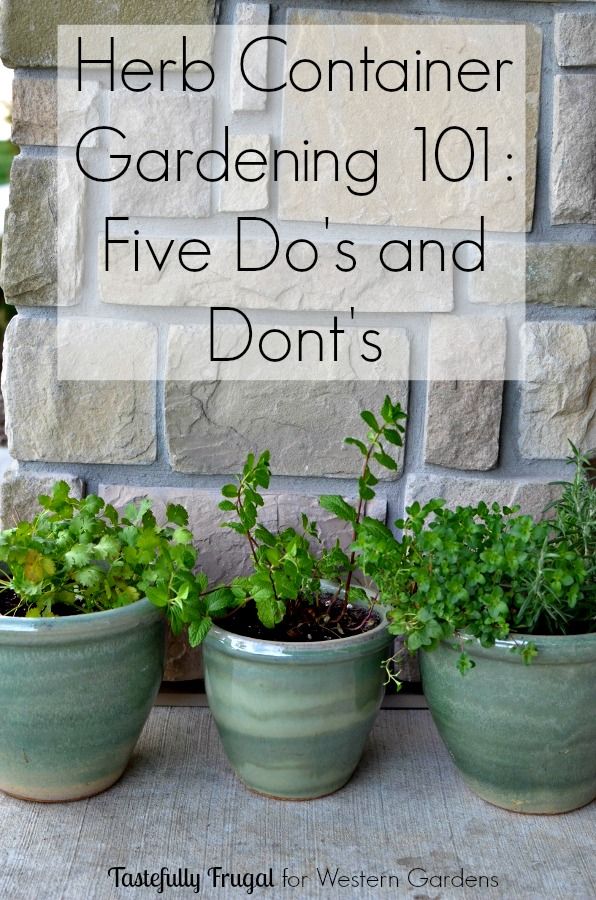 You can drill a few holes in the sole of the boot for drainage if the boot is not old enough to provide adequate drainage.
You can drill a few holes in the sole of the boot for drainage if the boot is not old enough to provide adequate drainage.
6
Recycle an old chest of drawers into a landscaping herb garden. Line each crate with plastic to protect the wood from rotting, then add a few inches of gravel for drainage. Arrange the drawers in a checkerboard pattern so that the bottom drawer is fully open, the middle drawer is halfway open, and the top drawer is slightly extended. This will create tiers for planting herbs and allow each box to receive the same amount of sunlight. nine0003
7
Plant the herbs through the holes in the sides of an old laundry basket filled with potting soil. While a basket with broken slats isn't good for laundry, it's great for herb gardens. Plants can fill the sides of the basket, making it hard to tell it's a laundry basket.
8
Plug the ends of the old drain, add drainage holes and use the drain to plant your favorite herbs.